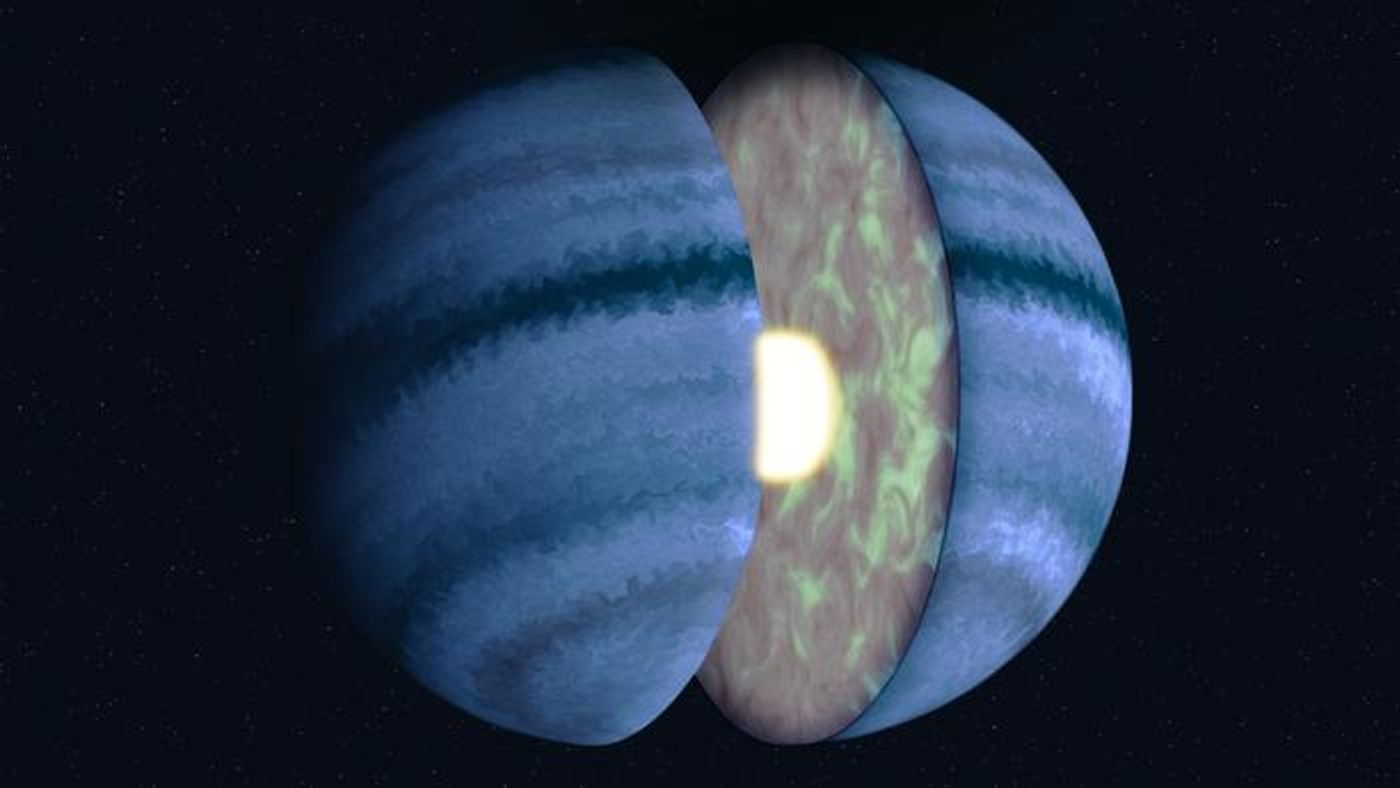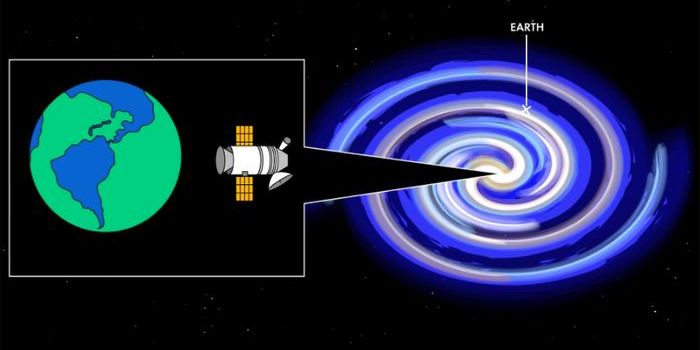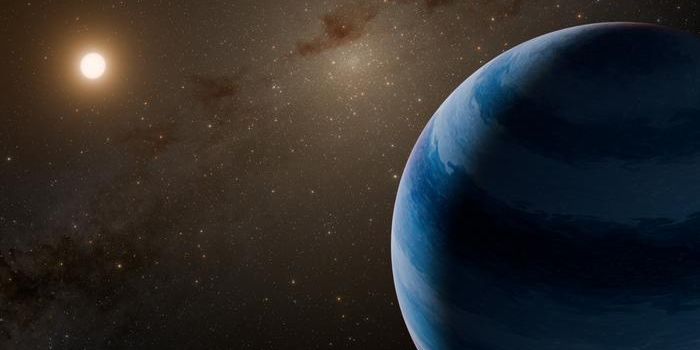New Findings on WASP-107 b Challenge Assumptions About Gas Giant Composition
Gas giant planets within our solar system and exoplanets outside our solar system are known to possess large amounts of gas and small cores, but what if an exoplanet was found to exhibit opposite characteristics? This is what a study published today in Nature hopes to address as a team of international researchers investigated the physical and atmospheric characteristics of WASP-107 b, which is located just over 200 light-years from Earth and has been found to have unique interior characteristics compared to previously discovered exoplanets. These unique findings hold the potential to challenge our understanding of the formation and evolution of gas giant exoplanets, which continue to demonstrate stark contrasts to planets within our solar system.
For the study, the researchers used NASA’s powerful James Webb Space Telescope (JWST) to observe WASP-107 b, discovering that while its radius is slightly less than Jupiter, its mass is only 10 percent of the largest planet in our solar system. Additionally, WASP-107 b possesses methane levels that are one thousand times less than what astronomers anticipated finding, along with having a core whose mass is 12 times larger than the Earth.
Artist’s illustration of WASP-107 b with its larger-than-normal core and turbulent interior atmosphere. (Credit: Roberto Molar Candanosa/Johns Hopkins University)
With an orbital period of only 5.7 days and with a radius just slightly less than Jupiter, exoplanets that exhibit these characteristics are typically referred to as “hot Jupiters”. However, along with its larger-than-normal core and methane levels several orders of magnitude lower than what astronomers traditionally observe, the team also observed higher levels of heavy elements on WASP-107 b than Uranus and Neptune, which also consists of water vapor, carbon monoxide, carbon dioxide, and sulfur dioxide.
“The planet has a hot core, and that heat source is changing the chemistry of the gases deeper down, but it's also driving this strong, convective mixing bubbling up from the interior,” said Zafar Rustamkulov, who is a PhD student in the Department of Earth & Planetary Sciences at Johns Hopkins University and a co-author on the study. “We think this heat is causing the chemistry of the gases to change, specifically destroying methane and making elevated amounts of carbon dioxide and carbon monoxide.”
Going forward, the team will turn its attention to the processes that maintain WASP-107bs hot core, which they anticipate could be caused by tidal forces or tidal heating as it could potentially be stretched and compressed like how Jupiter stretches and compresses some of its Galilean Moons as they orbit the massive planet.
What new discoveries about WASP-107 b and other unique exoplanets will astronomers make in the coming years and decades? Only time will tell, and this is why we science!
As always, keep doing science & keep looking up!
Sources: Nature, EurekAlert!, NASA, Johns Hopkins University, NASA (1)









